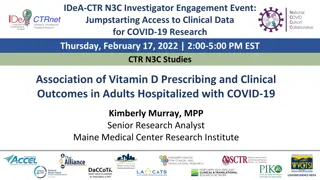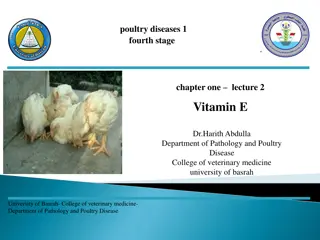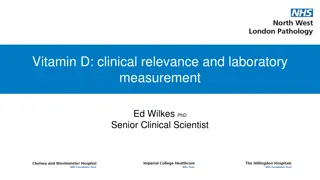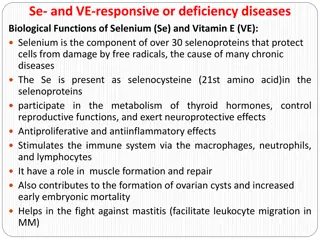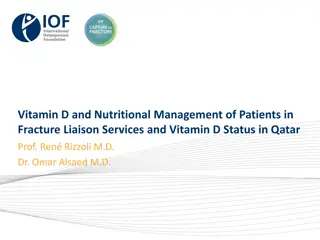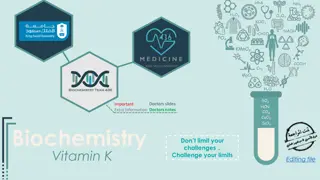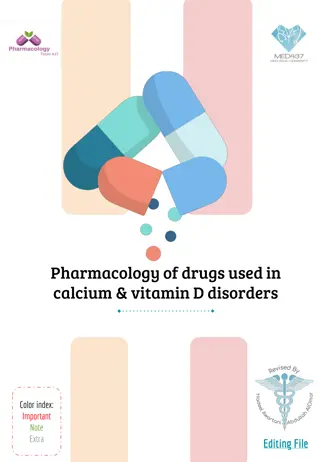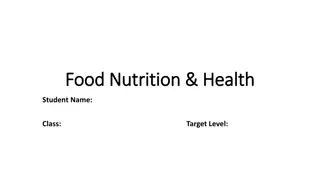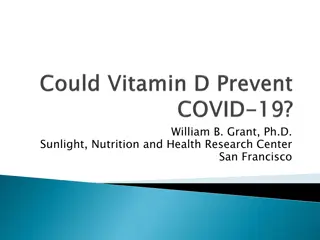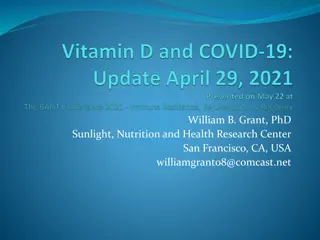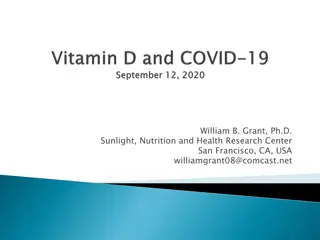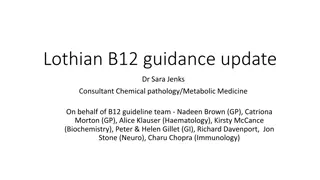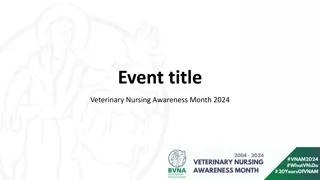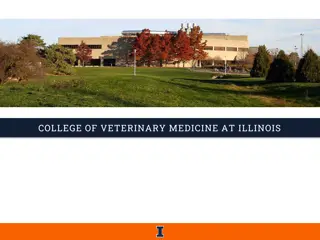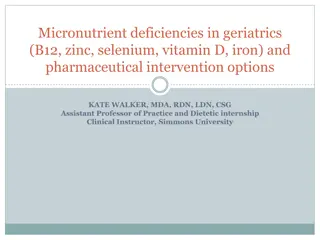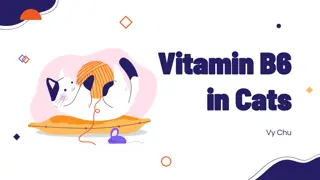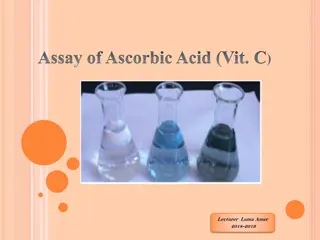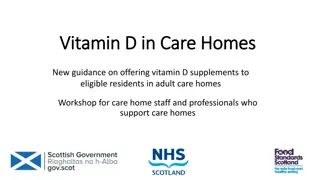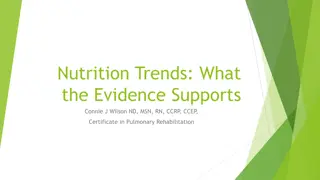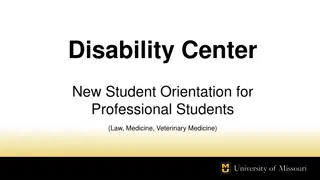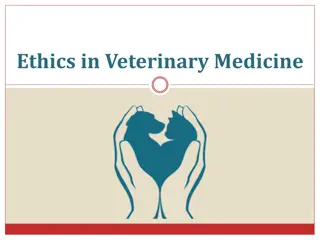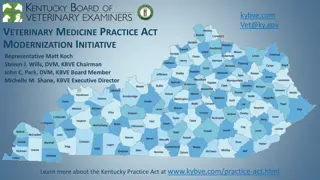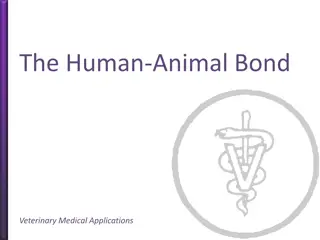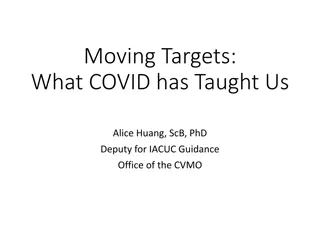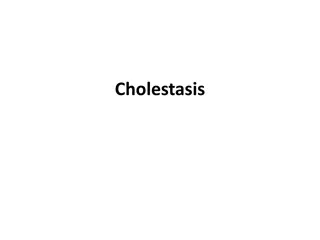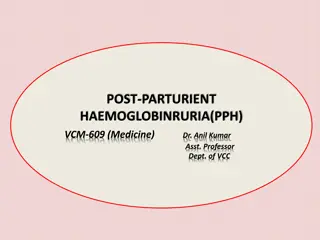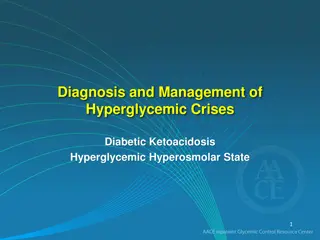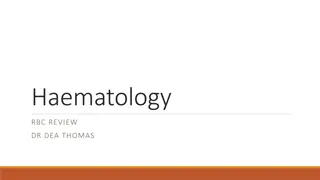Understanding Vitamin K Deficiency in Veterinary Medicine
Vitamin K deficiency in animals can lead to serious health issues due to its crucial role in blood clotting and bone metabolism. Different sources of vitamin K, such as plant material and bacterial fermentation, provide essential forms like K1 and K2. Factors contributing to deficiency include fat malabsorption, mycotoxins, and inadequate dietary intake. Clinical signs in ruminants may manifest as hemorrhagic diseases, highlighting the importance of proper nutrition and monitoring for optimal animal health.
Uploaded on Sep 11, 2024 | 0 Views
Download Presentation

Please find below an Image/Link to download the presentation.
The content on the website is provided AS IS for your information and personal use only. It may not be sold, licensed, or shared on other websites without obtaining consent from the author. Download presentation by click this link. If you encounter any issues during the download, it is possible that the publisher has removed the file from their server.
E N D
Presentation Transcript
VITAMIN K DEFICIENCY Veterinary Medicine Unit-3 Dr. Anil Kumar Assistant Professor VCC, BASU, Patna
Vitamin K Deficiency Vitamin K, a fat-soluble vitamin, is a group of napthoqunone compounds that have characteristic antihemorrhagic effects Vitamin K extracted from plant material was named phylloquinone or vitamin K1 Vitamin K extracted from bacterial fermentation were named menaquinones or vitamin K2 A synthetic form named menadione (K3)-simplest form of vitamin K, is is water soluble. Function: The liver is the main repository of vitamin K. Vitamin K is required for the hepatic post-synthetic transformation of several protein clotting factors It is essential for the post-translational processing of the prothrombin group of coagulation factors (Factors II, VII, IX, and X). Used as an antidote in poisoning by dicoumarol or warfarin.
A role in bone metabolism, as well as in the renal reabsorption of Ca++. Ruminant makes this through rumen microbial biosynthesis and absorbed in the small intestine Horses generally receive sufficient vitamin K from pasture, hay, and intestinal bacteria to meet their needs. Dogs receive both K1and K2in their diets, and cats derive their quinones from eating meat. Etiology: Fat malabsorption associated with inadequate amounts of bile salts (eg, biliary obstruction) Lymphangiectasia Severe villous atrophy may result in vitamin deficiency and coagulopathy owing to the lack of production of the functional vitamin K dependent Factors II, VII, IX, and X
Vitamin K antagonist or by feeding sulfonamides (in monogastric species) Mycotoxins Moldy sweet clover hay/sweet clover disease-lead to hypoprothrombinemia , because of dicumarol combines with the proenzyme to prevent formation of the active enzyme required for the synthesis of prothrombin and also interferes with synthesis of factor VII and other coagulation factors. Warfarin as a rodenticide Insufficient vitamin K in the diet, Lack of microbial synthesis within the gut Inadequate intestinal absorption, or inability of the liver to use the available vitamin K.
Note: Administration of estrogens increases absorption in both male and female animals The lymphatic system is the major route of transport of absorbed phylloquinone from the intestine in mammals but by portal circulation in birds Clinical Signs: Ruminants: Seen only in the presence of a metabolic antagonist, such as dicumarol from moldy sweet clover. The coumarin derivatives (dicumarol ) are not active in the fresh plant because they are bound to glycosides, but are active when sweet clover is improperly cured AND leads to sweet clover poisoning or hemorrhagic sweet clover disease Death from hemorrhage following a minor injury, or even from apparently spontaneous bleeding
Accidental poisoning of animals with warfarin (a synthetic coumarin used as a rodent poison) Initial clinical signs may be stiffness and lameness from bleeding into muscles and articulations. Hematomas, epistaxis (nose bleed), or gastrointestinal bleeding Death may occur suddenly, with little preliminary evidence of disease, and is caused by spontaneous massive hemorrhage or bleeding after injury, surgery, or parturition DOGS AND CATS: Accidental intake of dicumarol types of rat poison, such as warfarin and diphenadione (vitamin K antagonist), will result in a hemorrhagic condition in dogs Clinical signs in dogs include paleness and evidence of slow but persistent bleeding from a number of sites, including gums, bowel, and several injection punctures
Swine: Increased prothrombin and blood-clotting time, internal hemorrhage, and anemia due to blood loss Newborn pigs may be pale with loss of blood from the umbilical cord Diagnosis: Determination of prothrombin time Prolongation of the prothrombin time in the absence of liver disease indicates vitamin K deficiency Measurement of the plasma concentration of one of the vitamin K-dependent clotting factors (Factor-II, VII, IX and X) A routinely measure circulating phylloquinone as a method of evaluating vitamin K status. <0.5 ng/ml have been associated with impaired clotting functions
Treatment: Vit. K1 @1- 2 mg/kg administered intramuscularly /SC (especially in Dicumarol poisoning) Blood transfusion@10ml/Kg BW Note: Vitamin K3 should not be used, especially in horses, because it is associated with renal damage In horses, the recommended dose (Vitamin K3 ) is 0.5 to 2.5 mg/kg BW IM


